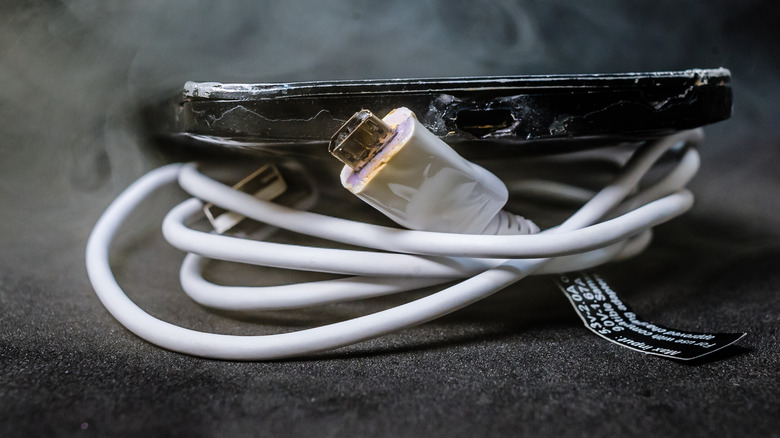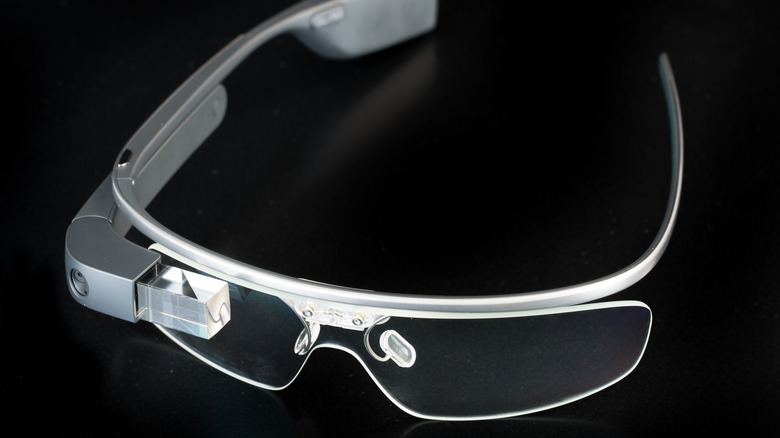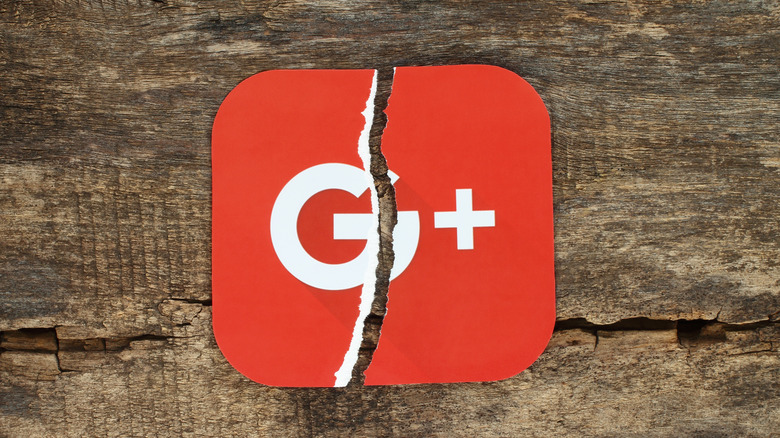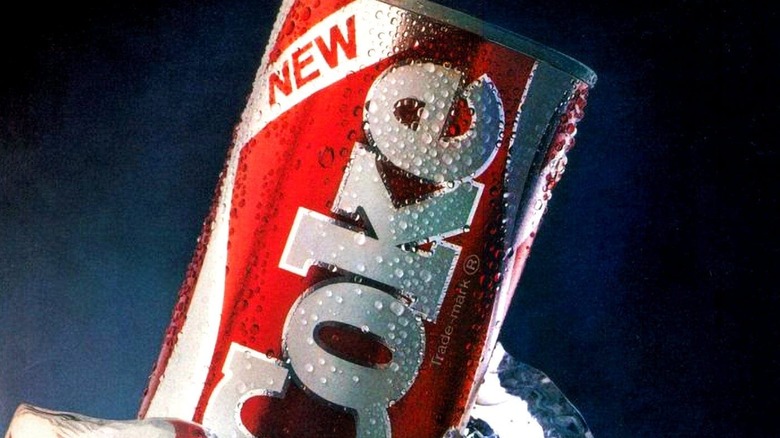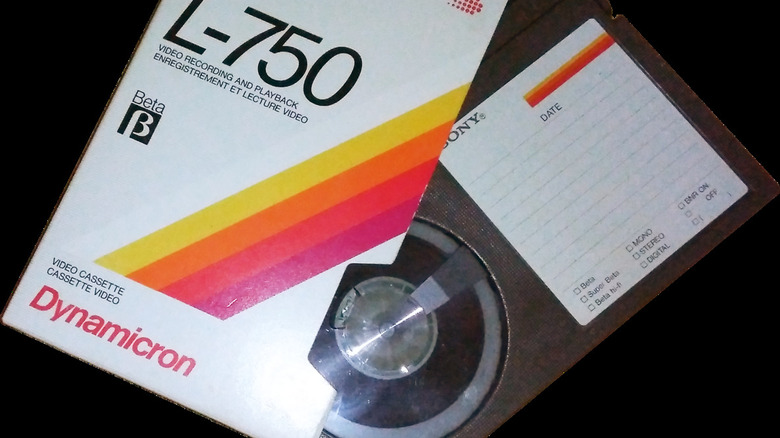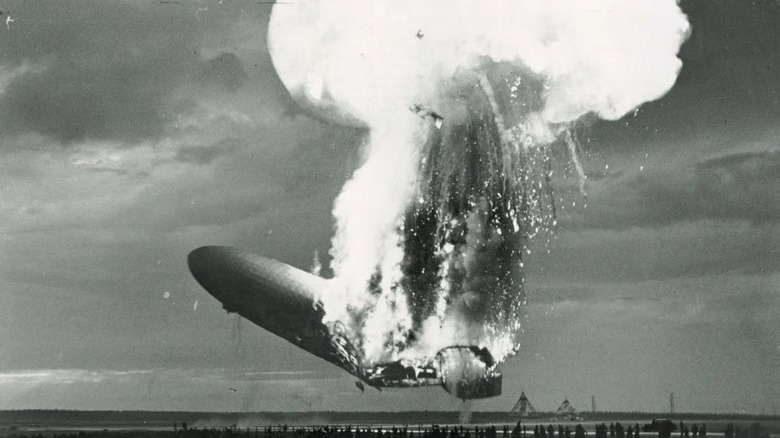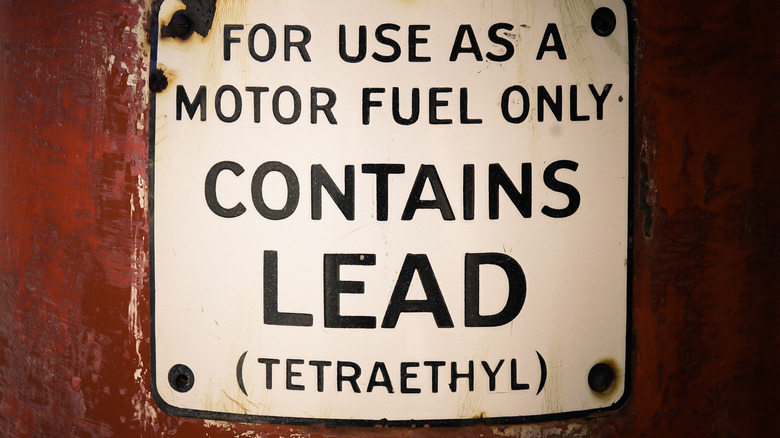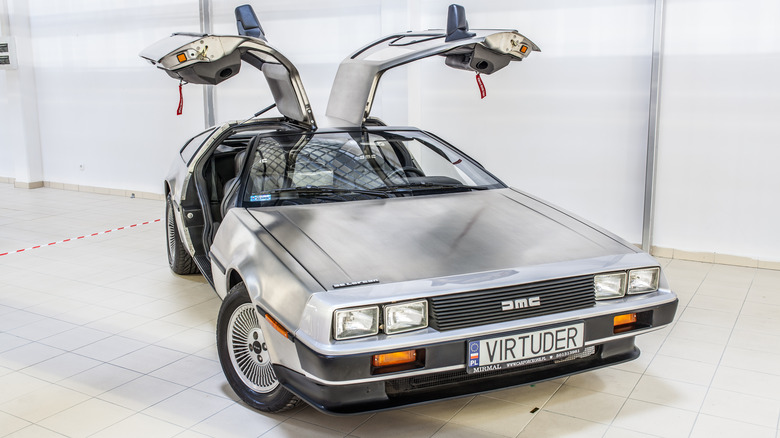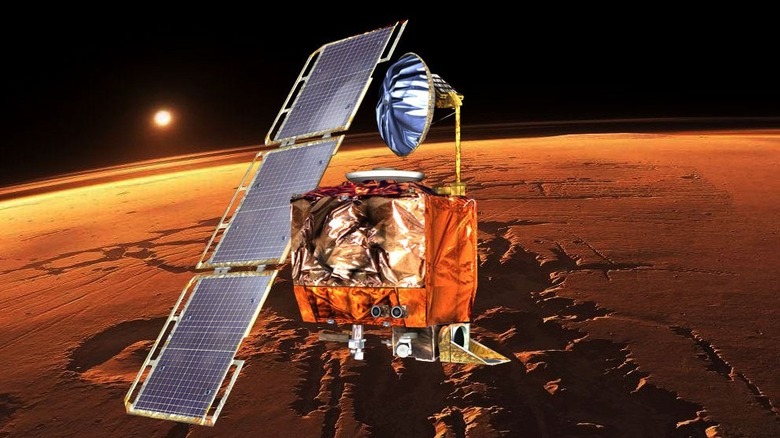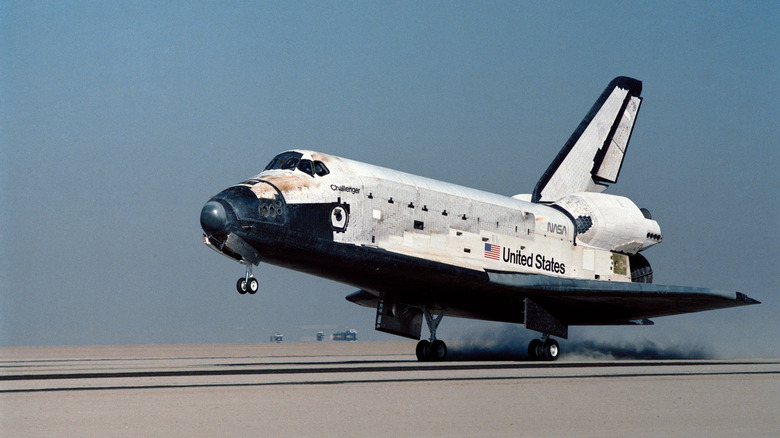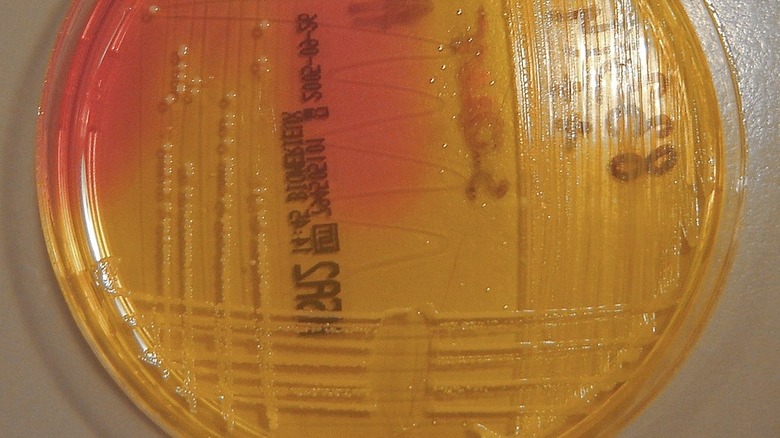Tech Malfunctions That Changed The Course Of History
If there's anything that separates humanity from the rest of the animals, it's our tendency to slap together absolutely bonkers technologies. Our unmatched ability to manipulate and shape the world around us transformed humans from roving hunter-gatherers into city-dwelling, clothes-wearing, TikTok-watching primates capable of spreading over almost every inch of this planet, for better or for worse.
Some of those technological advances, like the invention of the wheel and the advent of agriculture, were likely developed on purpose, at least in part. Others, like the taming fire, were probably happy accidents. A lot of the time, in order to change the world, you have to set out to accomplish something with firm intentions. Other times, you trip over your own feet, land in a disaster, and the world is never the same again.
When that happens, the world on the other side of catastrophe is irrevocably altered. We can only hope those mistakes bring with them valuable lessons, or at least a cool story.
Exploding phones
By 2016, mobile phones had become a ubiquitous piece of technology, comfortably stowed in the hand or pocket of roughly half of the global population, (per Statista). So, it was a bad time for them to start exploding, but that's exactly what happened with regard to Samsung's Galaxy Note 7.
As explained by Business Insider, Samsung immediately jumped on the problem, like the loose grenade that it was, and appointed hundreds of researchers and engineers to analyze tens of thousands of phones and batteries.
The TSA announced a ruling banning the phones from being allowed on any flights, whether in carry on luggage or inside checked bags. Effectively, Note 7 users were left with a choice to skip their trip, find alternate travel arrangements, or fly without the communication device they had come to rely on.
Samsung's investigation eventually revealed errors in the manufacturing of the batteries inside their phones which caused them to catastrophically overheat, (per BBC). The incident caused Samsung to lose market share and consumer confidence, but their response resulted in renewed trust and safer mobile phone batteries.
Google Glass
Beginning in 2010, Google started going after what they refer to as moonshots, highly innovative technological solutions meant to totally transform human life. These projects were, and are, dreamed up under the company's X Development division, previously known as Google X.
Perhaps their most famous, or infamous, product was Google Glass, a pair of augmented reality glasses which were supposed to be the next big thing in smart tech. Glass promised to move humanity into a truly hands-free future and bring our augmented reality science fiction dreams to life. While Glass did eventually materialize in a limited way, those dreams did not.
As explained by Investopedia, the promise of Glass was loftier than Google was able to deliver. Promotional videos showed Glass displaying all of the information your phone usually delivers directly into your field of view. Phone calls, messages, and alerts emerged seamlessly as the wearer went about their day. The trouble was those functionalities were more concept than reality. While Google tried to remain transparent about the project's ongoing development, the distance between consumer hopes and reality were too large. The $1,500 price point certainly didn't help. The lackluster launch of Glass may have stunted the development and adoption of augmented reality. Even now, nearly a decade later, smart glasses haven't significantly entered the consumer space and at least some of that goes back to a failed moonshot.
Google isn't struggling as a company. It continues to maintain the world's most popular search engine and rake in an ungodly amount of advertising revenue. It's doing just fine, but Google Glass wasn't its only major flop. Although this time around, a technological failure bore fruit in unexpected places.
Google+ was the tech giant's biggest attempt at breaking into the social media sphere. G+ offered a suite of functionalities, like breaking your contacts into groups for greater control over what you share with whom. Those features looked good on paper, but the platform had other problems.
As explained by TechCrunch, spam notifications and platform requirements ultimately contributed to the service fizzling out. While it failed as a social media platform, Google+ did succeed in launching a couple of spinoff products.
Google Hangouts was born as a part of Google+ and introduced capabilities like live video and integrated chat functions which laid the groundwork for the variety of video call services which have exploded in popularity over recent years. Hangouts also offered the ability to broadcast to a wider audience, a function which eventually became YouTube Live.
While Google+ is largely forgotten, only a few years after it finally shuttered, ripples of innovation continue to shape the internet landscape today.
New Coke
Is Pepsi okay? The question has become a joke in and of itself, alluding to any situation in which you might be forced to settle for something which isn't quite what you want. Coca-Cola has long been the leader in the soft drink space and the company owes its enduring success, at least in part, to its biggest failure.
Throughout the '70s and '80s Pepsi was creeping up on Coke, stealing up significant portions of the soda market. As explained by History, Coke got it into their heads that the problem was the taste of their soda. That belief was driven by the popular Pepsi challenge and internal taste tests, both of which showed that people preferred the taste of Pepsi in a blind comparison.
In response, Coke redesigned their formula, retired their original soft drink, and rebranded as New Coke. The public rebellion was so fierce and so immediate that Coke had to pull back in a press conference, announcing that the old Coke formula would be returning.
After only a few months, New Coke was off store shelves, replaced by Coca-Cola Classic. It was a comeback story for the ages. What might have been a massive blunder, turned out to be the best thing the brand could have done. Sales of Coca-Cola surged, cementing the soft drink as the leader of carbonated sugary beverages, seemingly for all time.
All it took was people getting a taste of what they could be missing.
Betamax
In the '50s, Sony started selling devices for recording video to cassette tapes. That technology eventually evolved into Sony's Betamax device for home video. The cassettes were small, had high video quality, and were easy to use. The major hurdle was the limited recording time of 60 minutes.
In response, JVC launched their VHS tapes and player. The quality was poorer, and the tapes were bigger, but they offered twice the recording time, long enough to capture most movies of the time, (per Legacy Box).
The rivalry between Sony and JVC hinted at the format wars so common today, both in video formats and video game consoles. Betamax had a jump on the competition, and they had higher quality technology, but they failed to account for what consumers really wanted. Even crisp video loses its luster if you run out of tape before your flick hits its climax.
JVC doubled down, extending their recorded time from two hours to 4 – 6 hours, and that was the nail in Betamax's cassette-shaped coffin. VHS ultimately allowed people to record movies off of their televisions and laid the foundation for home video. A generation of kids picking out movies at the local Blockbuster have Sony's failure to thank.
The Hindenburg
There was a time, not too long ago, when it was possible to take trans-oceanic cruises in the sky. In fact, it was the only way to cross the Atlantic over the air in the first part of the twentieth century. Airplane technology hadn't yet figured out how to travel those distances, but rigid airships could do the job.
Airships promised slow, luxury flights around the world. That all came crashing down, literally, when the Hindenburg burned up a few hundred feet over New Jersey in 1937.
Even today it is unclear precisely what caused the Hindenburg's fiery end, but there are a few hypotheses. As explained by The Smithsonian, static buildup from a nearby storm might have built up around the ship. This shouldn't have been a problem as the mooring ropes hitting the ground before descent should have discharged any lingering electricity. However, it's believed that the ship's canvas was doped with chemicals similar to jet fuel. The combination of static electricity, flammable canvas, and hydrogen cells were a recipe for disaster.
Another idea is that sharp turns prior to docking broke some of the interior framing and created sparks inside. We may never know the ultimate cause of the fire, but any chance at a steampunk future went down in flames that day.
Leaded gasoline
Today we use ethanol as an additive for gasoline to improve performance in combustion engines, but prior to that another chemical was used, one which ultimately had disastrous results. As explained by NPR, General Motors discovered that adding tetraethyl lead to gasoline had a positive effect on performance, in 1921.
At the time, researchers believed any negative impact related to lead exposure from gasoline would be minimal and lead made its way into fuel reserves around the world. Those predictions turned out to be catastrophically wrong.
Lead exposure from gasoline made its way into the environment where a generation of people suffered the dire consequences. By 1973 the United States started phasing out its use though it remained in use, in at least some capacity, for a couple more decades. Around the world, leaded gas continued to burn until 2021 when the last of the global stockpiles were used up.
The symptoms of lead poisoning include seizures, vomiting, and developmental delays, (per Mayo Clinic). The total cost to human lives and society are unknowable but, according to the United Nations, the elimination of leaded gasoline saves roughly 1.2 million lives per year. Given how recent the use and elimination of leaded gasoline was, those consequences are very likely still playing out.
DDT
In the 1940s the age of chemical pesticides began with the invention of DDT. It was initially successful at controlling insect populations and the diseases they bring with them. That control resulted in decreased cases of insect-borne diseases in both human and animal populations, (per the EPA).
For a brief moment, humanity celebrated its technological dominion over nature, further molding the world around us to our own designs. Then things went awry. Many insects began to develop resistance to chemical pesticides, necessitating the development of even stronger chemical agents.
Moreover, those chemicals got into waterways, spread over the air, and impacted animal and human populations who were not the intended target. Exposure brought with it its own health risks which, in many cases, were worse than the insect-borne diseases they were trying to prevent.
Today, the use of DDT is tightly controlled and is used only in specific circumstances when world health leaders have determined the risk of diseases like malaria outweigh the risks of the pesticide itself. DDT's most long-lasting legacy exists inside the pages of Rachel Carson's celebrated book "Silent Spring," which describes the harrowing consequences of spraying pesticides and which some credit as starting the modern environmental movement, (per NRDC).
The DeLorean DMC-12
In the early '80s, humanity was treated to perhaps the most iconic car ever made, the DeLorean DMC-12. With its sleek design (for the time) and gullwing doors, it should have been a breakout hit, but it was pretty much dead on arrival.
As explained by Britannica, the DeLorean manufacturing plant was staffed by people who were largely inexperienced, resulting in cars which looked good on the outside but had lots of interior problems. Roughly a year after the first DeLorean rolled off the factory floor, the company was bust.
The car might have been entirely lost to history if not for an iconic role as Doc Brown's time machine in the immortal "Back to the Future" franchise. The car failed to gain enough market share to survive but it has, nonetheless, become a pop culture touchstone, keeping the car alive on the secondary market decades after the last one should have been rusting in a junkyard.
While it might not have happened the way John DeLorean intended, his car did end up changing history, even if only on the silver screen. Despite all odds, it will have a second bite at the apple shortly. The word on the street (or in the future, where we don't need roads) is the DeLorean is making a triumphant return as an updated electric vehicle, (per IGN).
The Mars Climate Orbiter
In December of 1998, NASA launched the Mars Climate Orbiter, the second of three crafts which were part of the Mars Surveyor program. The MCO was intended to act as a communications relay for the Mars Polar Orbiter and future Mars missions after completing a three-month mission analyzing the current climate on Mars and reconstructing its past, (per NASA).
After successfully traveling millions of miles through interplanetary space on its way to the red planet, the MCO initiated orbital insertion maneuvers. Mission control expected a loss of contact as the satellite passed behind Mars, but a signal was never reacquired.
A subsequent investigation revealed that the probe was lost due to a conversion error in the navigational commands. Instructions were sent to the probe using English units, instead of metric units, (per MIT). As a result, instead of sliding into a stable orbit, the MCO entered the Martian atmosphere and disintegrated.
After the investigation, additional checkpoints were put in place to ensure a similar error didn't occur with the Polar Orbiter or any future crafts. If losing a $193 million probe didn't convince the United States to switch to metric, it's unclear if anything ever will. That might be the most expensive mathematics mistake of all time.
The shuttle disasters
The shuttle program represents one of the most storied and successful periods of human spaceflight. Over the course of three decades and 134 flights, the shuttle program helped to usher in the modern age of space exploration, launching the Hubble Space Telescope and constructing the International Space Station, but it wasn't without its share of tragedy.
The loss of the Columbia and Challenger shuttles and their crews were and are a stark reminder of the potential dangers inherent in space travel. The last flight of the Challenger occurred on January 28, 1986 and was especially notable as the crew included Payload Specialist Christa McAuliffe, the first school teacher to fly as part of NASA's Teacher in Space program, (per History). While the world watched, Challenger lifted off from the launch pad and exploded 73 seconds later. The cause of the disaster turned out to be a faulty O-ring leading to a fuel leak.
The shuttle program proceeded, largely without incident, until February 1, 2003, when disaster struck again, this time aboard the Columbia. Two weeks earlier, as Columbia lifted off, a piece of insulating foam broke away from a propellant tank and struck the left wing, (per Britannica). Damage to the wing allowed excess heat to penetrate during re-entry and the craft broke up on its way back to Earth.
While the shuttle program continued for another eight years, the loss of Columbia and Challenger were a significant contributor to grounding the shuttle forever.
Penicillin
In 1928, Dr. Alexander Fleming was serving as a bacteriologist at St. Mary's Hospital in London. In his laboratory, he had a collection of petri dishes containing colonies of the bacteria Staphylococcus, which he had been studying. However, summer was calling and Fleming left the lab for a vacation in Scotland, (per PBS).
As explained by Science History, Fleming failed to place a petri dish in an incubator, instead leaving it out on a lab bench. Upon his return from vacation on September 28 of 1928, Fleming surveyed his abandoned dishes and found the bacteria growing nicely in all of them except for one. A piece of mold had grown in one of the dishes and the bacteria seemed to be avoiding it at all costs. In fact, there was an apparent barrier around the mold in which no bacteria had grown.
Fleming later figured out that the mold, a strain of Penicillium notatum, was secreting antibacterial components. Fleming dubbed the compound "mold juice." Luckily, the name didn't catch on. Instead, a team of scientists at the School of Pathology at Oxford University isolated the compound and crafted it into the world's first antibiotic medication, (per ACS).
It's likely you've been prescribed antibiotics at some point in your life, and quickly overcame a bacterial infection which might have claimed your life less than a century ago. You can lay your quick recovery squarely at the feet of Fleming's failure to follow his own laboratory protocols.

